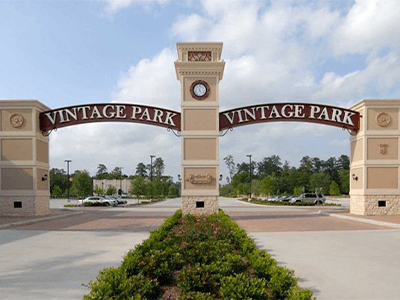Whether you’re hiring a sign company to create signage solutions for a new construction project or as part of a design refresh, you’re investing time and money. It’s important to have an understanding of the sign fabrication process.
This understanding will help you determine which sign industry expert is the best choice for your project. Additionally, your knowledge in this area will help ensure that this small but important project management detail goes smoothly.
You’ve likely developed some competencies in various building trades and disciplines that allow you to communicate effectively with contractors who work on interior and exterior elements of your projects. Similarly, you can use your understanding of these processes to get great outcomes for your clients.
What Is Architectural Signage?
Architectural signage is a broad term that refers to the sign systems that exist in the interior and exterior of commercial spaces. These signs communicate the following:
- The businesses within a space
- The purposes of those businesses
- The aesthetics of a particular property
- The branding of the business advertised on the sign
Architectural signage should work with the design of the structures surrounding it while also grabbing the attention of visitors and consumers.
5 Steps to Architectural Sign Fabrication
Architectural sign fabrication involves five important steps:
1. Customer Consultation
In addition to the designer, stakeholders in any architectural sign fabrication include:
- The client
- The architect
- The general contractor
- Visitors, customers, students, or patients
While the last group may not have a formal representative at the conference table, their needs are very important.
During this stage, the sign designer and their team will gather requirements, learn more about the architect’s vision, and go over engineering codes. Now is also the ideal time to discuss any logistical concerns relating to sign placement and installation.
2. Design and Design Review
Ideally, the signage team completes the first step with a clearer understanding of what the contractor is trying to accomplish. They’ll take that information and conduct a bit of further investigation. Specifically, they’ll consider the visual appeal, functionality, and availability of resources like electricity and structural elements.
All of this information will be prioritized as the initial design for the sign is created. This initial design will be presented during the design review process, where any modifications will be discussed.
3. Obtaining Permits
Once the design is in place, the operations team steps in; these are the specialists who take steps to ensure that the sign will be installed on time and within code, including working with local officials to obtain the correct permits.
4. Manufacturing
Manufacturing will involve using a variety of tools, materials, and processes to create a sign that aligns with the vision of the architect and contractor while benefiting the customer.
5. Installation
If you’ve worked with a full-service sign company, the final step will be the installation of the completed signage. It’s impossible to overstate the importance of this stage. The most attractive, well-designed signs won’t be functional without a proper installation process that ensures stability, longevity, and safety.
Architectural Sign Fabrication with National Signs
National Signs is your source for architectural sign design, manufacturing, installation, and service. Our team will work with you to create custom signage for any project. Contact us today or review our gallery.




